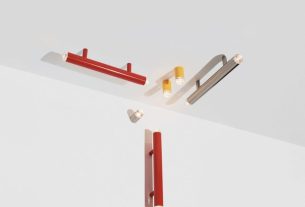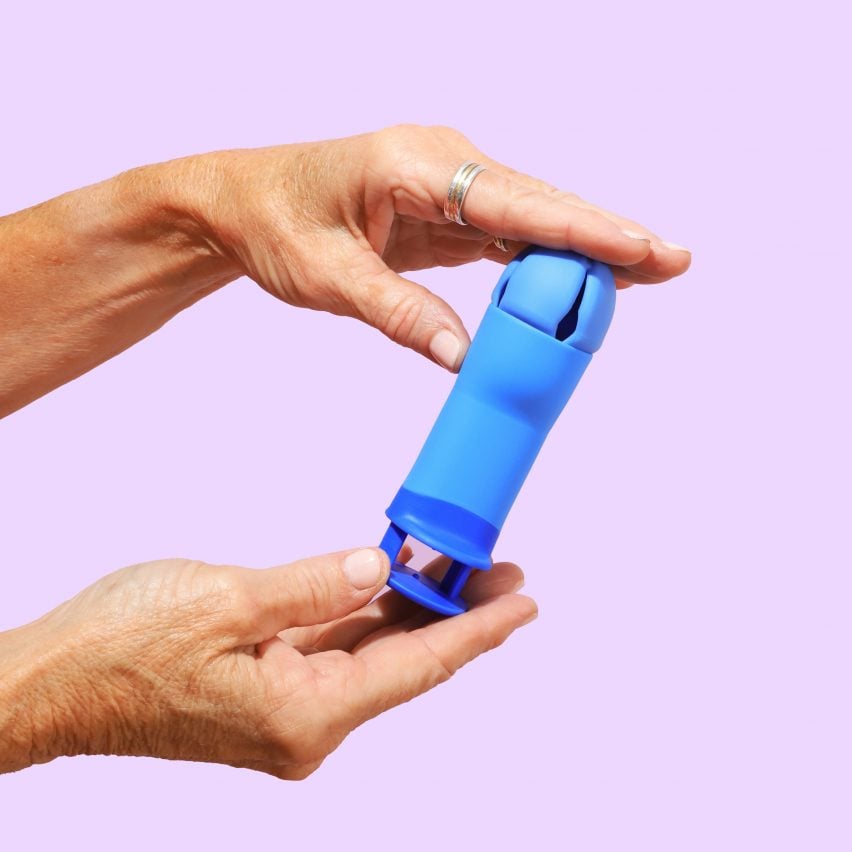
A medical device to support a newborn’s body during resuscitation and a pregnancy test feature in this roundup of the curators’ favourite pieces from the Designing Motherhood exhibition.
Opening on 4 October at New York’s Museum of Arts and Design (MAD), the travelling exhibition Designing Motherhood: Things that Make and Break Our Births explores the arc of human reproduction through the lens of design.
The show examines how design has evolved over the last 150 years to support mothers’ and children’s health and survival, and covers a spectrum of solutions developed to tackle challenges in infertility, pregnancy, postpartum and parenthood.
Over 250 commercial products sit alongside medical devices, speculative design projects and graphic materials to shine a spotlight on the discipline’s impact on reproductive health and mental wellbeing.
“Designing Motherhood celebrates the ingenuity and idealism of designers and designs across the spectrum of reproductive health that have improved lives,” said Elizabeth Koehn, who curated the exhibition together with Michelle Millar Fisher.
“At the same time, the exhibition questions the viability of the promised ‘better living through design’ championed by American manufacturing and sold through the countless products that purport to ‘solve’ every health challenge related to reproduction, from contraception to birth and lactation to menopause.”
Koehn explained that the exhibition intends to open up a dialogue surrounding access to reproductive rights and care in the US.
“These are anxious times, not just for parents but for everyone. We live in a country where reproductive justice is still not a given,” Koehn said. “Since we all experience birth at least once in our lives, we hope that MAD visitors will see themselves in the exhibition and reflect on how design – and access to it – impacts lives all along the arc of human reproduction.”
Read on to learn about Millar Fisher and Koehn’s personal highlights from the show below:
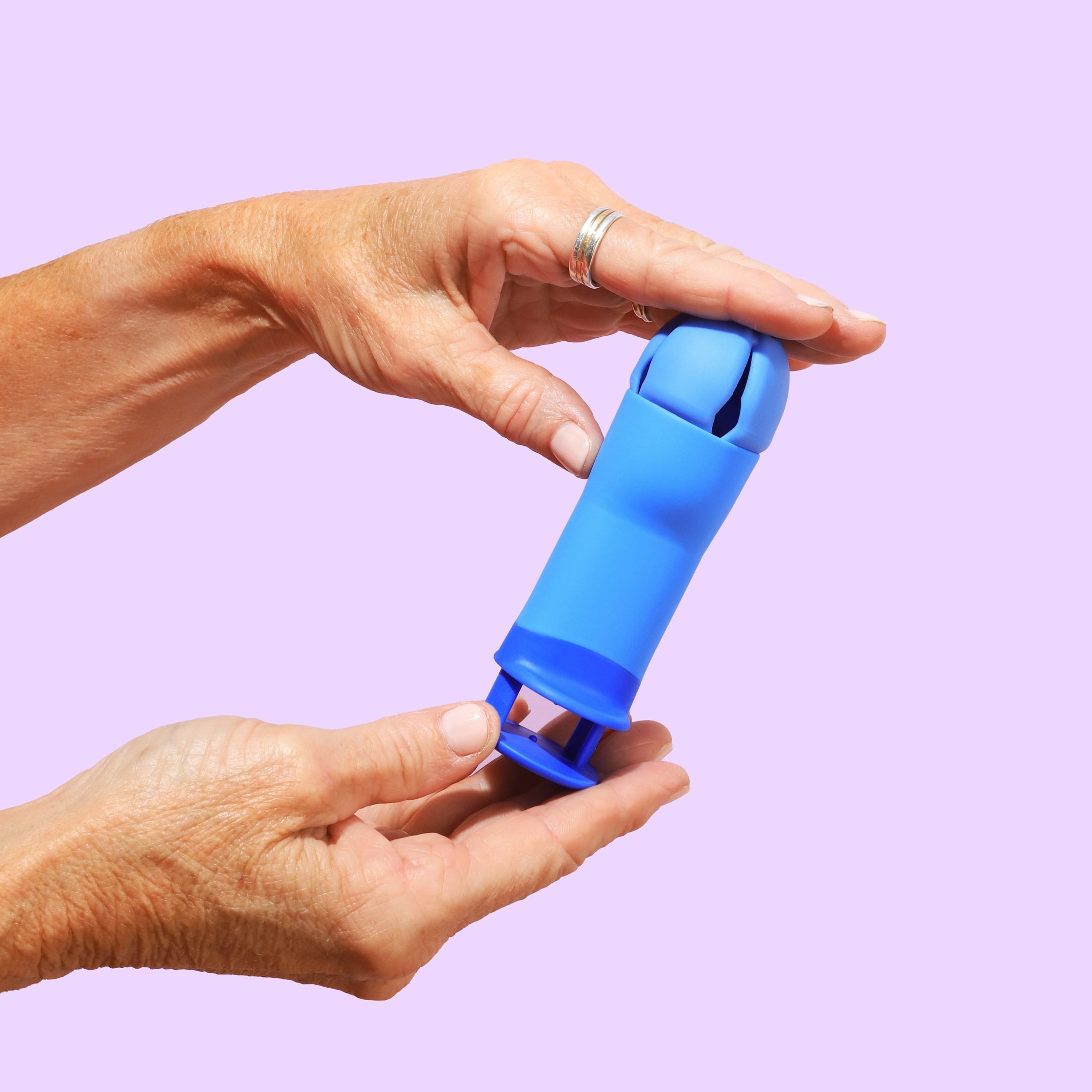
Reia Pessary by Kaitlin Maier, Ariana Sopher and Meegan Daigler
“Did you know that one in every two people with a uterus – a whopping 50 per cent – will experience a prolapse? Where the womb descends partially or wholly at some point in their life, either due to childbirth or the ravages of gravity? Neither did we, before we met the dream team behind the Reia pessary.
“Back then, Kaitlin Maier, Ariana Sopher and Meegan Daigler were freshly graduated from an engineering programme where a class brief challenged them to redesign an object.
“They chose the pessary – a design inserted into the vaginal canal to hold anatomy in place – because its basic form hadn’t been rethought in almost a century, before which items like a ball of moss or a pomegranate were used.
“They saw an opening to improve the category and went on to spend years iterating until they got US Food and Drug Administration (FDA) approval for a genre-changing design that improves user autonomy and comfort.
“It hit the market in 2024. We applaud their tenacity as well as their willingness to take on a problem that affects so many who often suffer in silence,” Millar Fisher said.
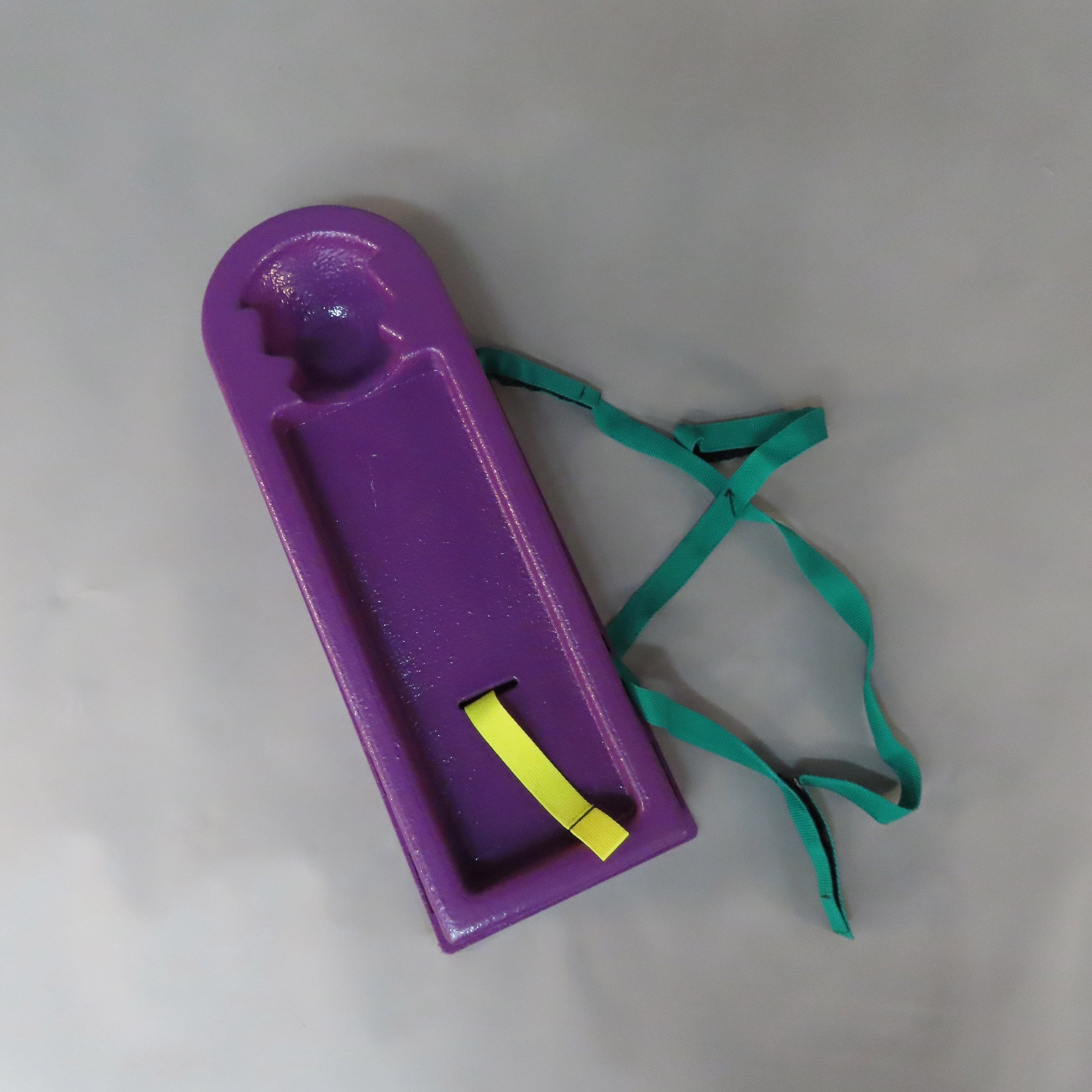
Resus-A-Cradle Easy Transport Cradle II by Anni McLaughlin
“This sculptural, almost Memphis-y looking object is one of my favourite additions to the exhibition here at MAD. We first learned about the Resus-A-Cradle, a support board that stabilises an infant’s head, neck and body during resuscitation, from a member of our advisory committee who works as a certified nurse-midwife.
“It’s an inspiring example of a design coming not from the hands of a trained designer but from someone identifying a problem in their field and coming up with a brilliant solution based on their own expertise and experience.
“In this case, that someone is Anni McLaughlin, another certified nurse midwife and registered nurse, who began developing the Resus-A-Cradle after experiencing challenges resuscitating a newborn at a home birth.
“While midwives have often relied on improvised methods in such situations, Anni wanted to design a piece of equipment that could reliably keep a baby’s head in the safe, open airway ‘sniff’ position needed during emergency resuscitation. She created her first prototype for the Resus-A-Cradle from clay, taking measurements from the babies she delivered to ensure the design would support different newborn sizes, and then used that clay model to test various silicone casts, further refine the dimensions in CAD, and secure a manufacturer.
“After nearly four years of development, the first official Resus-A-Cradle was sold in November 2017, and the design is now a staple in many midwives’ kits across the country.
“Anni collaborated with emergency medical technicians (EMTs) to design this model specifically for ambulance transport the following year, underscoring the experience-based knowledge that informs its lifesaving design,” Koehn said.
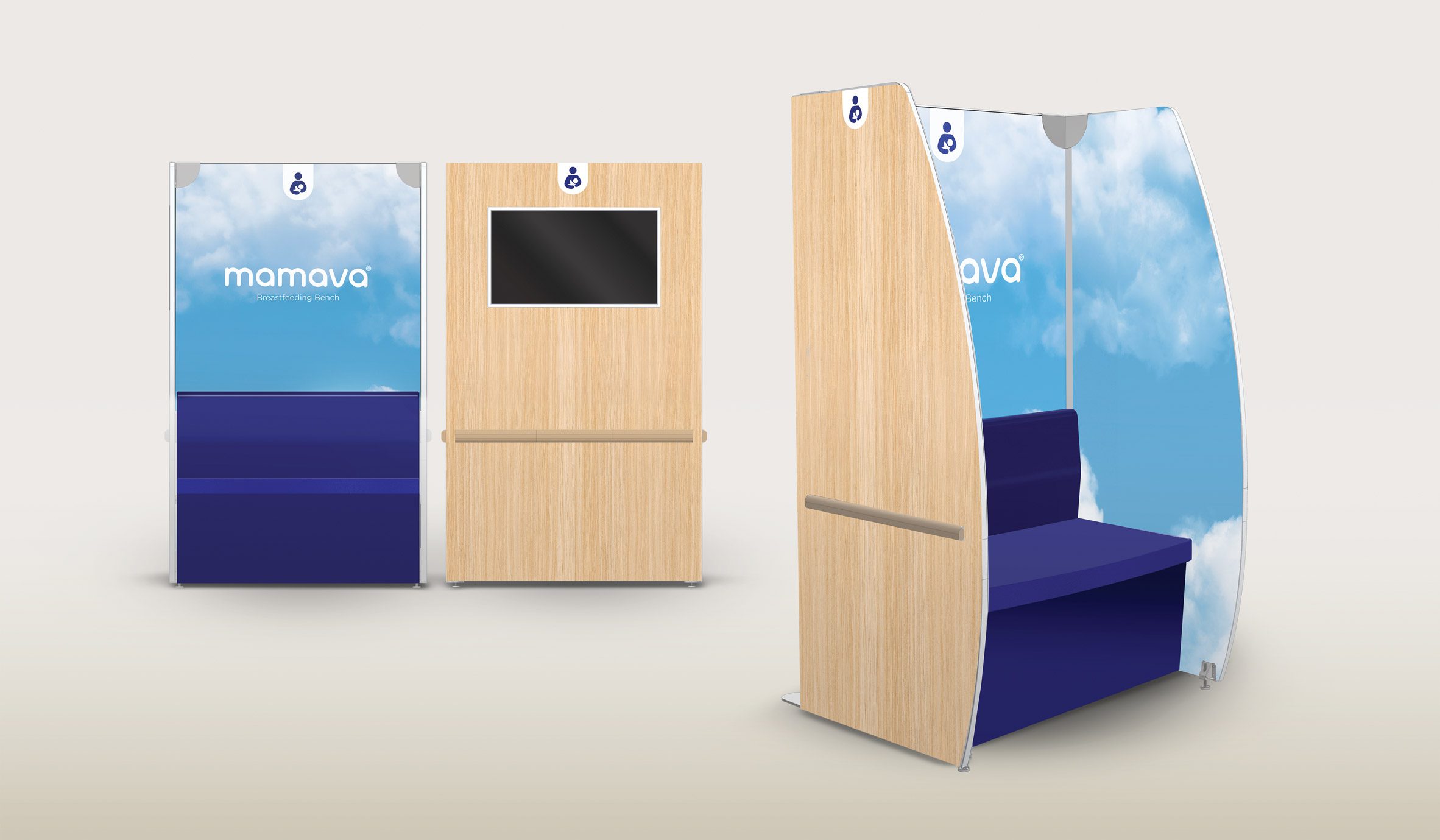
Mamava Breastfeeding Bench Prototype by Sascha Mayer and Christine Dodson
“There are so many ways that design for the built environment can impact experiences of motherhood and caregiving – just ask anyone trying to manoeuvre a stroller up or down a subway stairwell.
“For parents who prefer to pump or feed their baby in a quiet and private place, finding areas to do so within the public sphere can be another challenge. Enter Mamava, a company that designs and manufactures lactation space solutions.
“Co-founders Sascha Mayer and Christine Dodson tackle the widespread lack of dedicated lactation rooms in workplaces and public areas with a human-centered design approach, conducting research and speaking with breastfeeding people and employers about their needs and desires when developing designs.
“This semiprivate bench is a brand-new prototype, created for spaces too small to accommodate one of the brand’s original enclosed pods but still offering its users a removed and comfortable area for lactation.
“We’re delighted to be able to include it in the gallery, firstly as an example of design intervening in the architectural space to accommodate the needs of its user, and secondly as a functional bench for our visitors to use during their time at MAD,” Koehn said.
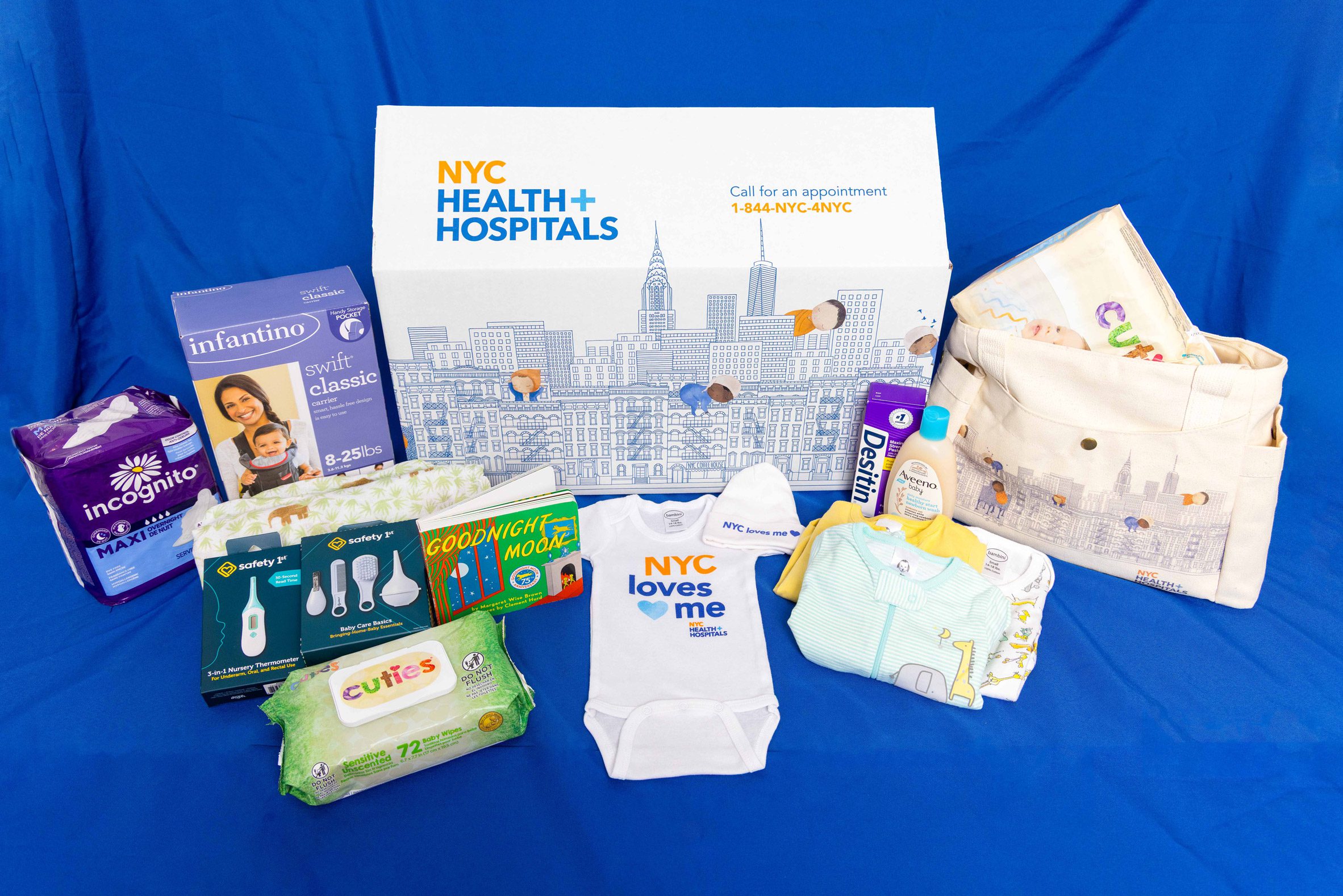
NYC Baby Box
“We’re honoured to feature the very first NYC Baby Box to arrive in New York City as part of the mayor’s new pilot programme, which will provide supplies and parenting resources to families giving birth at four public NYC Health + Hospital locations beginning this fall.
“It’s a great example of design on many levels – there’s the design of the box and its contents, and also the design of a system created to support our community here in New York.
“The NYC Baby Box will be on view alongside a recent Finnish maternity package, which comes to us courtesy of The Social Insurance Institution of Finland. Finland has been offering baby boxes to its expectant citizens since 1938, with the aim of improving maternal and infant health and providing all children with an equal start in life.
“While many European countries have followed Finland’s example, the US has not, making local initiatives like the NYC Baby Box essential sources of support for expanding families.
“It was important to us to situate these examples of design for both objects and social systems at the exhibition’s entrance, to introduce the topics of access and equity right from the get-go. And as the first New York venue to host Designing Motherhood, it’s fantastic to be able to start things off with an exciting NYC-centric design solution,” Koehn said.
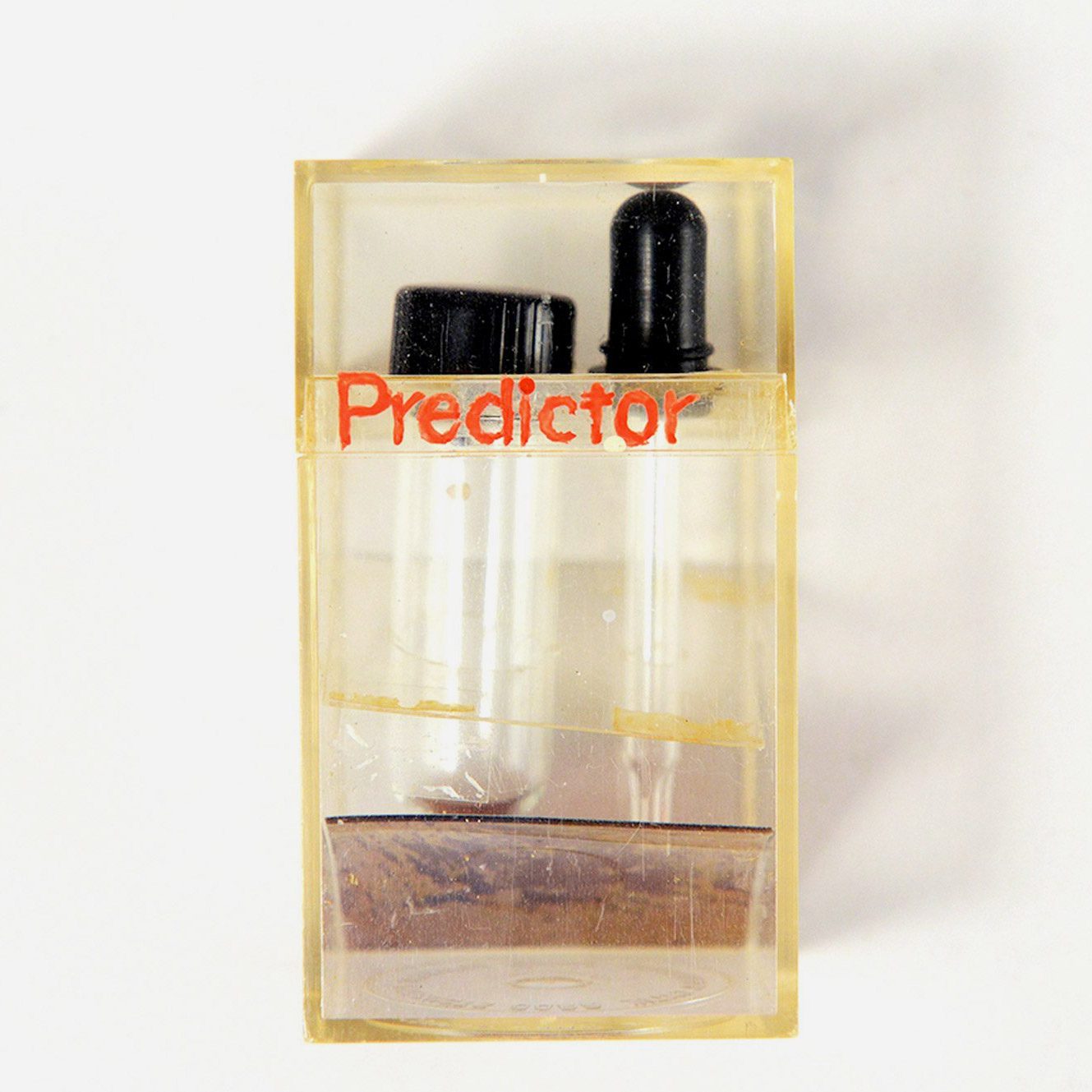
Predictor Pregnancy Test by Meg Crane
“There are many connecting threads across the Designing Motherhood checklist, but one of our favourites might loosely be termed ‘sisters doing it for themselves’, aka female designers who, when faced with substandard reproductive health experiences, took matters into their own hands. Meg Crane is the mother of this category in our eyes.
“In the late 1960s, she worked as a packaging designer for Organon, a pharmaceutical company with offices in New Jersey. After seeing urine samples ready for pregnancy testing on a lab bench, she ignored a (male) colleague who said women couldn’t be trusted to do this themselves at home and created an individually packaged test that is the forerunner of the single-use pregnancy tests we know today.
“She had to fight the misogyny of her male peers who didn’t believe her sleekly designed kit would sell – they tried and failed to add bows and a pink hue to appeal to its customer base,” Millar Fisher said.
Designing Motherhood: Things That Make and Break Our Births is on show at the Museum of arts and Design (MAD) from 4 October 2025 to 15 March 2025. See Dezeen Events Guide for an up-to-date list of architecture and design events taking place around the world.
The post Five highlights from the Designing Motherhood: Things That Make and Break Our Births exhibition appeared first on Dezeen.


